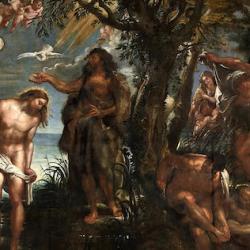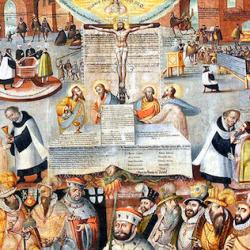Rowan Greer’s One Path for All is a study of Gregory of Nyssa’s writings on the Christian life. It includes a dozen selections from Gregory’s works, and then a series of essays on the pathway of pilgrimage and battle that every baptized person must, along with all the baptized, walk.
Greer is keen to show that for Gregory the life of the Christian is a life in community, and he explains that Gregory puts the point in rather startling terms:
“Since I suspect we are tempted to understand baptism in individualistic terms, I think it important to add that Gregory’s emphasis is upon the incorporation of the individual into the church as the body of Christ. . . . And he begins his interpretation of the phrase by employing language commonly used in medical treatises. We must recognize that every head is of the same nature (homophusis) and being (homoousios) as the body placed under it, and that there is a certain natural union (sumphusia) of the individual members with the whole, a union that by a single agreement (sumphnoia) achieves for the members a sympathetic affection (sumpatheia) for the entire body.”
Christ is, Greer says, “the head of the body of the church through his humanity, which is the same as ours in nature and being.” But that is not the homoousios that Gregory is describing. Rather than a “natural” union in common humanity, it is a “moral and spiritual [union], depending upon the members’ conformity to Christ and to the concepts by which he is known” (147).
That Gregory would employ the key Nicene term homoousios to describe the relation of the baptized to the glorified Christ is, to put it mildly, noteworthy.














